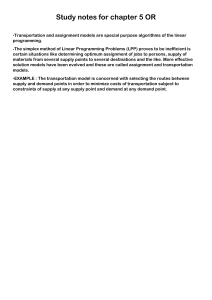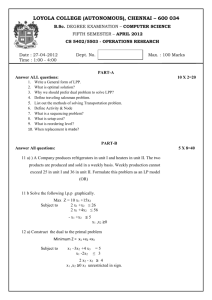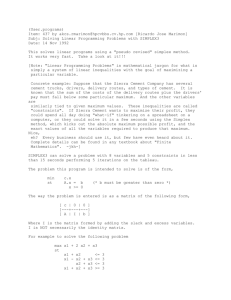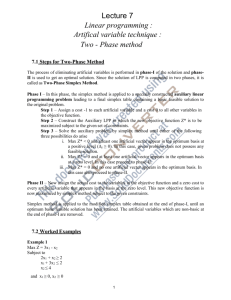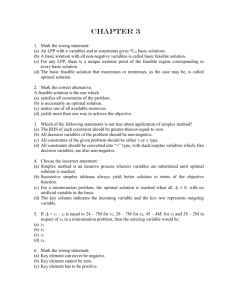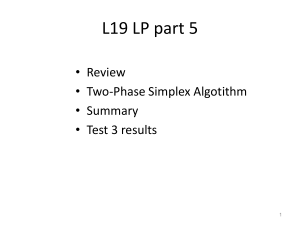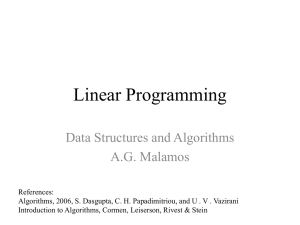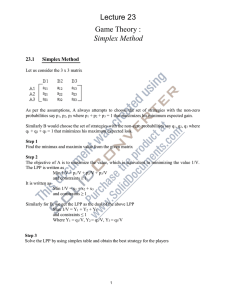Unbounded Solution In some LP models, the values of the variables
advertisement
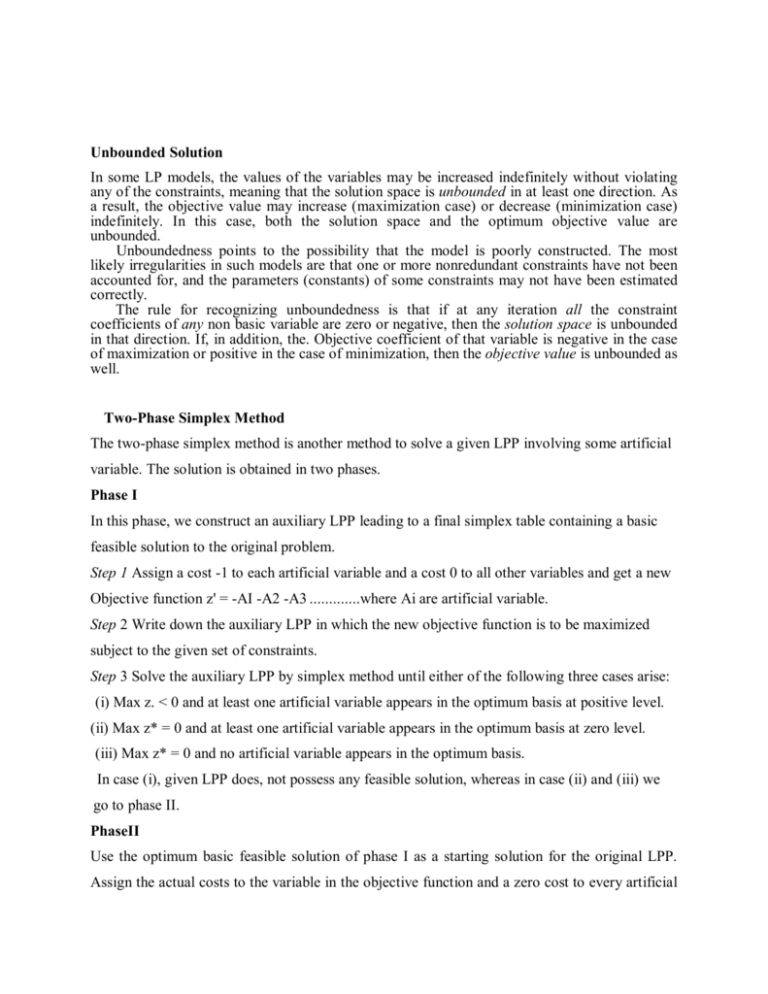
Unbounded Solution In some LP models, the values of the variables may be increased indefinitely without violating any of the constraints, meaning that the solution space is unbounded in at least one direction. As a result, the objective value may increase (maximization case) or decrease (minimization case) indefinitely. In this case, both the solution space and the optimum objective value are unbounded. Unboundedness points to the possibility that the model is poorly constructed. The most likely irregularities in such models are that one or more nonredundant constraints have not been accounted for, and the parameters (constants) of some constraints may not have been estimated correctly. The rule for recognizing unboundedness is that if at any iteration all the constraint coefficients of any non basic variable are zero or negative, then the solution space is unbounded in that direction. If, in addition, the. Objective coefficient of that variable is negative in the case of maximization or positive in the case of minimization, then the objective value is unbounded as well. Two-Phase Simplex Method The two-phase simplex method is another method to solve a given LPP involving some artificial variable. The solution is obtained in two phases. Phase I In this phase, we construct an auxiliary LPP leading to a final simplex table containing a basic feasible solution to the original problem. Step 1 Assign a cost -1 to each artificial variable and a cost 0 to all other variables and get a new Objective function z' = -AI -A2 -A3 .............where Ai are artificial variable. Step 2 Write down the auxiliary LPP in which the new objective function is to be maximized subject to the given set of constraints. Step 3 Solve the auxiliary LPP by simplex method until either of the following three cases arise: (i) Max z. < 0 and at least one artificial variable appears in the optimum basis at positive level. (ii) Max z* = 0 and at least one artificial variable appears in the optimum basis at zero level. (iii) Max z* = 0 and no artificial variable appears in the optimum basis. In case (i), given LPP does, not possess any feasible solution, whereas in case (ii) and (iii) we go to phase II. PhaseII Use the optimum basic feasible solution of phase I as a starting solution for the original LPP. Assign the actual costs to the variable in the objective function and a zero cost to every artificial variable in the basis at zero level. Delete the artificial variable column from the table which is eliminated from the basis in phase I. Apply simplex method to the modified simplex table obtained at the end of phase I till an optimum basic feasible is obtained or till there is an indication of unbounded solution.
